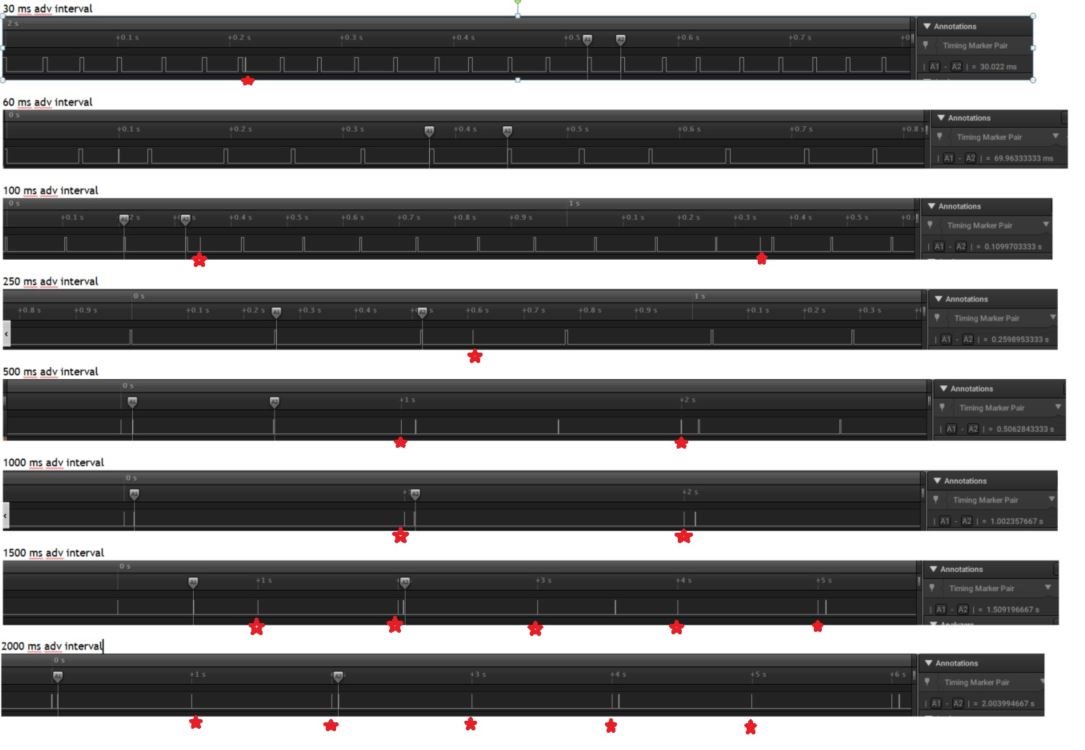Tool/software: TI-RTOS
Hi TI BLE team,
We are checking the power consumption on FOB(peripheral device) with the below conditions.
By the way, there are no big differences between different slave latencies.
I confirmed that the response status of connection parameter update request. You can see the log data through attached log data and pictures below.
Current SW is based on TI SDK simplelink_cc26x2_sdk_2_20_00_36 and POWER_SAVING mode is on.
Even though two devices are in a connection state and connection events continue to occur, I thought that the power consumption should be different according to the slave latency.
Why no big differences at all?
If any, let me know.
Through analyzer, we can confirm that the slave latency operation works.
With kind regards,
Ji Won Lee



